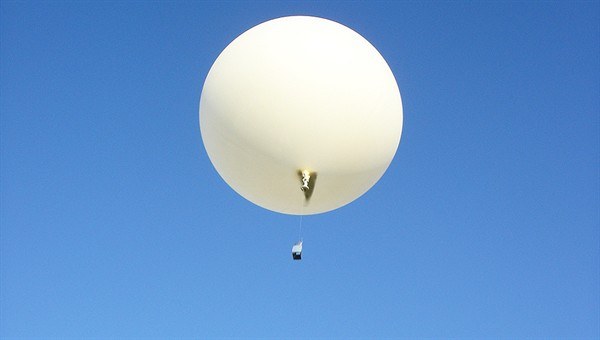Balloon in the Sky: Onset of BHEA measurement campaign to improve climate models
The first measurement balloons are in the air, and by April 30, 2012 a total of 90 of these climate probes will be successively launched on a search for data. Starting from Oberpfaffenhofen, their purpose is to record wind velocities and temperatures, especially at elevations from 12 to 30 kilometers. This measurement campaign is being carried out by the German Remote Sensing Data Center (DFD) in cooperation with the Schneefernerhaus environmental research station and subsidized by the Bavarian Ministry of Environment and Health. The BHEA project team is investigating the role of alpine mountain ranges in the transport of energy into the atmosphere.
"Vision test" for satellites
Long-term prognoses from climate models supply valuable information hinting at changes in regional and global weather and environment, providing a basis for evaluating possible effects on health or future energy supplies. The purpose of DLR‘s BHEA project is to increase the accuracy of climate and atmosphere models by expanding the data basis for the models.
Satellites make it possible to monitor the atmosphere globally. However, the quality of the measurements is limited: "It’s as if the satellite enabled us to look through wonderfully large eyeglasses, but with an out-of-focus result. Detailed ground measurements supply the correction factor for sharpening up the images" explains Prof. Dr. Michael Bittner, head of the atmosphere unit at DLR’s German Remote Sensing Data Center.
Highly precise data from the measurement balloons make it possible to quantify extremely subtle structures in the atmosphere. By comparing these measurements with those from the earth observation satellite TIMED the global data set can be corrected.
More accurately determining the direction of jet stream movement
Up until now, usually only large-scale processes immediately affecting the climate, like jet streams, were taken into account in the model calculations. But in the future small-scale atmospheric processes are also to be increasingly considered, since they can have a significant effect on the powerful wind flow systems present in the troposphere, stratosphere and mesosphere. "Jet streams are like moving freight trains. It takes a considerable force to stop them, but their direction can be changed by simply throwing a little rail switch" explains BHEA project leader Dr. Sabine Wüst of DLR’s German Remote Sensing Data Center.
In the atmosphere, "oscillating air parcels," so-called gravity waves, can function as switches for large air flow systems. The dynamics are initiated when parcels of air encounter hindrances like alpine mountain ranges and are diverted upward. The rising air expands and cools. As soon as the air packet is colder than the surrounding atmosphere it descends since it is now heavier than the surrounding air. The descending air packet contracts and warms in the process. When it becomes warmer than the surrounding air it rises again; in other words, the air packet oscillates.
Gravity waves expand horizontally and vertically until they happen to encounter major wind flow systems. These cause the gravity waves to collapse, thereby accelerating or slowing down the jet stream. The direction of the flow system can also change as a consequence. This is the effect that is to be more precisely incorporated in climate model calculations.
The measurement campaign data is to be stored at the DLR World Data Center for Remote Sensing of the Atmosphere on behalf of the World Meteorological Organization (WMO) and with a mandate from the International Council for Science (ICSU). The DLR measurement data will thus be made available to the research community. The BHEA project will run until February 2014.

